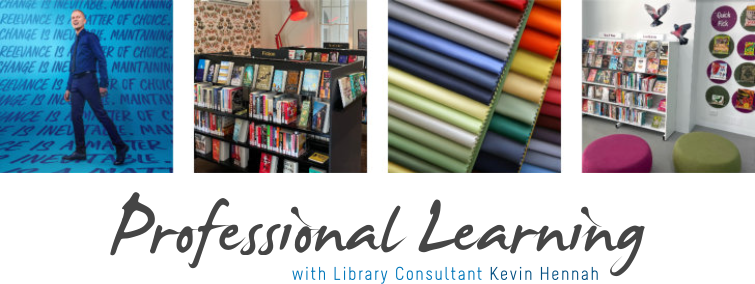The Role of Print in Contemporary Libraries
Contributed by www.kevinhennah.com.au
The Internet shifted the ‘goal posts’ for almost all organisations and those who continued to aim in the same direction no longer achieved past results. I noted many looked for external factors to blame instead of accepting their strategies were loosing relevance. Take retail for example, it has taken many businesses over a decade to grasp how to maintain relevance in a market that is now driven by online shopping. Many retailers thought that launching a website was sufficient – tick the box – done! It’s really not that simple as the need to evolve never stops.
Maintaining relevance requires constantly reviewing your product offering and evolving your promotional strategies. In fact, this has always been the case, but the Internet sped the wheel of change beyond anything we had experienced in our lifetime. Many declared online shopping to be the demise of physical retail stores. This clearly has not been the case, but online shopping did mark the end of less progressive and agile retailers.
Quite simply, the key to success is being proactive – not reactive and this idea is not isolated to retail.
Unlike some retailers, libraries wasted no time adopting an online presence and offering Internet access. Customers welcomed this with an insatiable appetite. In a bid to keep the physical space appealing, many invested in decor and seating. It’s fair to say that this has worked as many libraries continue to draw healthy numbers. In contrast, I believe many libraries have missed opportunities to explore innovative ways to present the physical collection and in turn, maintain print stats. I frequently visit libraries that report an increase in numbers with a significant decrease in loans. I’m looking for an increase in both and I know from experience that this is achievable.
Strict adherence to Dewey does little to drive loans when print has to complete with online resources. Frankly – there’s no such thing as an interesting aisle!
In education, I have met with countless people who question whether Non Fiction is loosing relevance. These schools have keep abreast of developments in technology over the past 20 years. However, during this time, the faded, poorly weeded Non Fiction collection has remained on tall, dated shelving arranged in narrow isles. Rarely is a book displayed face-out and little or no innovative signage solutions have been developed to help print compete with online resources. There’s really no more they could have done to make the collection look less appealing! I am a keen supporter of online resources and new technologies, as well as proactive weeding of the print collection. However, I believe we cannot make an informed judgement on the relevance of books until we create a level playing ground between print and new technologies and I believe genrefication is the key.
I frequently hear the frustrated stories of people who have been unsuccessful in gaining funding for new shelving. Perhaps they need to focus on return on investment and less on the financial investment itself! To do so, we need to sell the concept of injecting new life into the library by dissolving aisles and creating a flexible environment where genre-based collections punctuate multifunctional seating solutions and innovative merchandising replaces storage.
To that end, even in the library design and renovation process, much effort is invested in architecture and décor. Of course this is very important, however in contrast, I believe insufficient time is spent exploring innovative ways to present the collection. The result is often a contemporary veneer around very traditional and often outdated ideas on how print should be managed and displayed.
Since delivering my first workshop for libraries n 2002, I have been asking: “How would you set up your library if you were to receive $1 in your personal bank account for every item borrowed?” This question is as powerful and relevant today is it was two decades ago. Many libraries I work with report an increase in loans of up to 40% as a result of genrefication – so I’m clearly passionate about the potential.
If you haven’t already done so, ’now’ is the perfect time to rethink, reinvent, rejuvenate!
